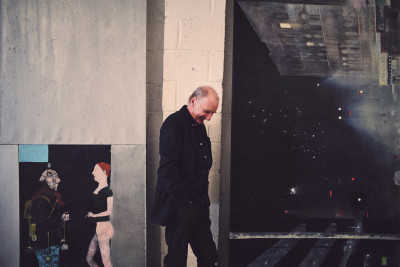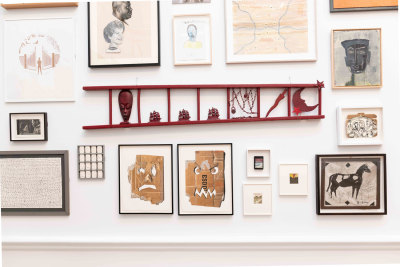Richard Rogers on working with Renzo Piano: “His poet’s soul brought us through”
Richard Rogers on working with Renzo Piano: “His poet’s soul brought us through”
By Laura Mark
Published 14 September 2017
As Renzo Piano celebrates his 80th birthday, close friend and fellow Academician Richard Rogers looks back at what it was like to work together on one of the 20th century’s most iconic buildings – the Pompidou Centre in Paris.
-
Richard Rogers RA and Renzo Piano Hon RA were in their thirties when, in 1971, they saw off competition from 680 other architectural teams to win the high-profile job to design Paris’s new contemporary arts centre. The project – which was contentious at its opening in 1977 – has gone on to become one of the world’s most significant and loved modern buildings.
“I knew Renzo as a friend, before I worked with him, though we had so much in common that we soon decided to collaborate. We had no work but two unemployed partners were as good as one”, recalls Rogers.
Piano had recently moved to London when he met Rogers – apparently introduced by a doctor when they both had measles. The pair, who were both teaching at the time and had just a few small and experimental projects, decided to enter the competition for the Pompidou Centre together. Although as Piano recalled in a conversation held at the RA in 2013: “Our friendship is based on one saying the opposite of the other and Richard said we shouldn’t enter the competition”.
Dubbed the ‘bad boys’ of the contest, Rogers and Piano teamed up with engineers Peter Rice and Ted Happold of Ove Arup to come up with their pitch. Believing they had no chance of winning the competition, Rogers and Piano were just as surprised as everyone else when the jury – which included such architectural heavyweights as Oscar Niemeyer, Jean Prouve, and Philip Johnson – announced them as the chosen designers.
-

Centre Georges Pompidou

Renzo Piano and Richard Rogers on the phone in The Pompidou Centre, 1976
Renzo Piano, Su Rogers, Richard Rogers, Ted Huppold and Peter Rice in front of their winning entry for The Pompidou, 19th July 1971

Piano + Rogers, Pompidou Centre, Paris, 1971-77. Colour-coded external services
-
“Working together on the Pompidou Centre was one of the most exciting experiences of my life. We knew we wanted to create a place for all people, but were young and naïve”, remembers Rogers.
“We were attacked from all sides, but Renzo’s deep understanding of construction and architecture, and his poet’s soul, brought us through.”
Their idea came out of a time when the youth of Paris were protesting on the streets and the design was about making a place where people could come together. Its construction – played out over the following six years – would become a battle between establishment politics and ideological architecture.
Designed as a ‘fun palace for the city’, Renzo and Rogers’ designs for the Pompidou Centre had originally been much more radical – featuring moving floors and giant electronic billboards – but after budgets were cut and fire regulations came into play many of these original ideas were lost along the way.
But the main concept - for a building which would be truly flexible with exterior elements that could be detached and replaced through its lifespan – still remains today. Containing gallery space alongside a library, a research centre, auditorium and cinemas, the Pompidou Centre sits within a large and vibrant public space. Famed for its inside-out approach and resulting brightly coloured facade, the centre has become a Parisian landmark.
Following the completion of the building in 1977, Rogers and Piano went on to start their own separate architectural practices, each becoming world-renowned architects in their own right. They remain very close friends, sharing holidays, houses and hearty discussions about architecture.
Rogers concludes: “[Piano’s] architecture is considered and inspired, the marriage of poetry and technology, rooted in tradition with a social conscience. He is without doubt one of the greatest contemporary architects.”
-
Renzo Piano is in the Gabrielle Jungels-Winkler Galleries at the RA from 15 September 2018 to 20 January 2019.







